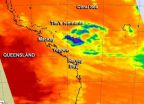(Press-News.org) Some diseases are caused by single gene mutations. Current techniques for identifying the disease-causing gene in a patient produce hundreds of potential gene candidates, making it difficult for scientists to pinpoint the single causative gene. Now, a team of researchers led by Rockefeller University scientists have created a map of gene "shortcuts" to simplify the hunt for disease-causing genes.
The investigation, spearheaded by Yuval Itan, a postdoctoral fellow in the St. Giles Laboratory of Human Genetics of Infectious Diseases, has led to the creation of what he calls the human gene connectome, the full set of distances, routes (the genes on the way), and degrees of separation, between any two human genes. Itan, a computational biologist, says the computer program he developed to generate the connectome uses the same principles that GPS navigation devices use to plan a trip between two locations. The research is reported in the online early edition of the journal Proceedings of the National Academy of Sciences.
"High throughput genome sequencing technologies generate a plethora of data, which can take months to search through," says Itan. "We believe the human gene connectome will provide a shortcut in the search for disease-causing mutations in monogenic diseases."
Itan and his colleagues, including researchers from the Necker Hospital for Sick Children, the Pasteur Institute in Paris, and Ben-Gurion University in Israel, designed applications for the use of the human gene connectome. They began with a gene called TLR3, which is important for resistance to herpes simplex encephalitis, a life-threatening infection from the herpes virus that can cause significant brain damage in genetically susceptible children. Researchers in the St. Giles lab, headed by Jean-Laurent Casanova, previously showed that children with HSE have mutations in TLR3 or in genes that are closely functionally related to TLR3. In other words, these genes are located at a short biological distance from TLR3. As a result, novel herpes simplex encephalitis-causing genes are also expected to have a short biological distance from TLR3.
To test how well the human gene connectome could predict a disease-causing gene, the researchers sequenced exomes – all DNA of the genome that is coding for proteins – of two patients recently shown to carry mutations of a separate gene, TBK1.
"Each patient's exome contained hundreds of genes with potentially morbid mutations," says Itan. "The challenge was to detect the single disease-causing gene." After sorting the genes by their predicted biological proximity to TLR3, Itan and his colleagues found TBK1 at the top of the list of genes in both patients. The researchers also used the TLR3 connectome – the set of all human genes sorted by their predicted distance from TLR3 – to successfully predict two other genes, EFGR and SRC, as part of the TLR3 pathway before they were experimentally validated, and applied other gene connectomes to detect Ehlers-Danlos syndrome and sensorineural hearing loss disease causing genes.
"The human gene connectome is, to the best of our knowledge, the only currently available prediction of the specific route and distance between any two human genes of interest, making it ideal to solve the needle in the haystack problem of detecting the single disease causing gene in a large set of potentially fatal genes," says Itan. "This can now be performed by prioritizing any number of genes by their biological distance from genes that are already known to cause the disease.
"Approaches based on the human gene connectome have the potential to significantly increase the discovery of disease-causing genes for diseases that are genetically understood in some patients as well as for those that are not well studied. The human gene connectome should also progress the general field of human genetics by predicting the nature of unknown genetic mechanisms."
INFORMATION: END
Microbes from the human mouth are telling Oak Ridge National Laboratory scientists something about periodontitis and more after they cracked the genetic code of bacteria linked to the condition.
The finding, published in Proceedings of the National Academy of Sciences, profiles the SR1 bacteria, a group of microbes present in many environments, ranging from the mouth to deep within the Earth, that have never been cultivated in the laboratory. Human oral SR1 bacteria are elevated in periodontitis, a disease marked by inflammation and infection of the ligaments and bones ...
PROVIDENCE, R.I. [Brown University] — Large chunks of an ancient tectonic plate that slid under North America millions of years ago are still present under parts of central California and Mexico, according to new research led by Brown University geophysicists.
Around 100 million years ago, the Farallon oceanic plate lay between the converging Pacific and North American plates, which eventually came together to form the San Andreas fault. As those plates converged, much of the Farallon was subducted underneath North America and eventually sank deep into the mantle. Off ...
Infrared satellite imagery tells the temperature of the cloud tops within a tropical cyclone as well as the sea surface temperatures around the storms. A recent infrared image from NASA's Aqua satellite showed very little strength in the remnants of ex-cyclone Tim offshore from southeastern Queensland.
The Atmospheric Infrared Sounder (AIRS) instrument aboard NASA's Aqua satellite captured an infrared image of Cyclone Tim on March 18 at 0355 UTC (March 17 at 11:55 p.m. EDT). The AIRS image showed that cloud top temperatures had warmed significantly since the previous ...
A study in the JAMA Neurology (formerly the Archives of Neurology) suggests that controlling or preventing risk factors such as hypertension earlier in life may limit or delay the brain changes associated with Alzheimer's disease and other age-related neurological deterioration.
Dr. Karen Rodrigue, assistant professor in the UT Dallas Center for Vital Longevity (CVL), was lead author on a study that looked at whether people with both hypertension and a common gene associated with risk of Alzheimer's disease (the APOE-4 gene carried by about 20 percent of the population) ...
Stingrays living in one of the world's most famous and heavily visited ecotourism sites — Stingray City/Sandbar in the Cayman Islands — have profoundly changed their ways, raising questions about the impact of so-called "interactive ecotourism" on marine wildlife, reports a new study published March 18 in the journal PLOS ONE.
Researchers from Nova Southeastern University's Guy Harvey Research Institute in Hollywood, Fla., and the University of Rhode Island studied the southern stingray population of Stingray City — a sandbar in the Cayman Islands that draws nearly a ...
Lowering the costs of healthy foods in supermarkets increases the amount of fruits, vegetables and whole grain foods that people eat, while also appearing to reduce consumption of nutritionally less-desirable foods, according to research from the RAND Corporation.
Researchers examined a program available to members of South Africa's largest private health insurance company that provides a rebate of 10 percent or 25 percent on purchases of healthy foods. The program, started in 2009, now has about 800 participating supermarkets and enrolls more than 260,000 households. ...
CHICAGO — Many of today's running shoes feature a heavy cushioned heel. New research presented today at the 2013 Annual Meeting of the American Academy of Orthopaedic Surgeons (AAOS) found that these shoes may alter an adolescent runner's biomechanics (the forces exerted by muscles and gravity on the skeletal structure) and diminish performance.
Researchers recruited 12 adolescent competitive athletes from local track teams, and asked them to run on a treadmill in large heel trainers, track flats and without any shoes (barefoot) at four different speeds. Biomechanics ...
CHICAGO — Osteoarthritis of the hip or knee, affecting millions of Americans each year, is known to limit sexual activity. New research presented today at the 2013 Annual Meeting of the American Academy of Orthopaedic Surgeons (AAOS) found that total hip (THR) or total knee replacement (TKR) surgery improves sexual function in 90 percent of patients.
In the study, 147 patients under age 70, scheduled for primary THR or TKR, agreed to participate in a study requiring the completion of questionnaires prior to surgery, at six months post surgery, and at one year post surgery. ...
CHICAGO — New research presented today at the at the 2013 Annual Meeting of the American Academy of Orthopaedic Surgeons (AAOS) found that overall, sports and recreation musculoskeletal injuries have declined 12.4 percent in the U.S. over the past 10 years for children ages 5 to 14 years. However, injuries sustained during football and soccer continues to rise.
In 2000, the U.S. Centers for Disease Control (CDC) reported the top eight sports and recreational activities responsible for injuries in children ages 5 to 14, and estimated their annual cost at more than $33 ...
CHICAGO – Magnetic Resonance Imaging (MRI) can detect a failing, or potentially failing, metal-on-metal hip implant (MoM) early on, according to a new study presented today at the 2013 Annual Meeting of the American Academy of Orthopaedic Surgeons (AAOS). Early detection can result in timely revision surgery, decreasing the risk for further tissue damage and pain.
Researchers reviewed the MRI images of 70 patients who ultimately underwent revision surgery for a failed MoM implant. The images were assessed for the presence of tissue damage, swelling and other characteristics. ...


